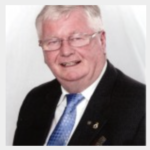 My first job after college was with Imperial Chemical Industries (ICI) at which time in the 1960’s the chemical process industries far outstripped that of the rest of the manufacturing industries.
My first job after college was with Imperial Chemical Industries (ICI) at which time in the 1960’s the chemical process industries far outstripped that of the rest of the manufacturing industries.
My second job was as a pioneer in the development of the North Sea, the expansion in search for oil and gas, leading in time to petroleum refining, the most hazardous of all offshore rolls at the time, was hookups, which is building the field, which was developed by a single central combined drilling and production platform.
The Magnus jacket was the largest single piece steel structure in the North Sea. It was designed, manufactured, and installed by John Brown Offshore. The original system also included seven subsea producing wells which were later turned around to water injection duty.
The topsides for Magnus were designed by Matthew Hall Engineering, which was also responsible for procurement, project management, construction management, offshore installation services and commissioning assistance. They were awarded the contract in December 1978. Initially there were facilities for 17 oil production wells, five water injection wells, and nine spare slots. The production capacity was 140,000 barrels of oil per day and 2.5 million standard cubic metres of gas per day.
There are two production trains each with two stages of separation with the first stage operating at a pressure of 28 barge. Natural gas liquids were extracted from the gas stream using a turbo-expander/re-compressor system. Electricity generation was powered by three 27 MW GE Frame 5 gas turbines. All the gas compressors were driven by electric motors, not by gas turbines. The topside accommodation was for 200 people. There were 19 topside modules, and the topsides weight was 31,000 tonnes, the hook-up involved putting all 19 modules in order like a giant Lego, joining thousands of miles of pipework, electric cable, each task involved considerable welding, cutting, and burning, each controlled by a hot work permit
The produced oil is transported by a 91-kilometre (57 mi) long 24-inch (610 mm) pipeline to the Ninians Central platform, and further to the Sullom-Voe Terminal. Produced natural gas from Magnus, together with gas from the Thistle and Murchison fields, is transported by a 79-kilometre (49 mi) long 20-inch (510 mm) pipeline to Brent A and further through the FLAGS to St Fergus in Aberdeenshire. I was responsible for all safety and fire prevention through hook-up, commissioning and into full production. My contract with BP on Magnus enhanced my reputation considerably and helped build my business, soon I was in demand with other oil & gas companies, including Shell, Mobil Oil, Total oil, Chevron etc.
It was the chemical industry which kept me going, it was different than the older established industries, and not as physically demanding as offshore due to the nature of toxic and flammable liquids and gases. Naturally, the handling and storage of hazardous materials presented a potential peril that was often far greater than those posed by the traditional industries apart from the North Sea.
By the mid1960s the chemical processing Industry became more and more sophisticated, with larger inventories of corrosive, toxic, and flammable chemicals, higher temperatures, higher pressures. It became no longer acceptable for a single well-meaning individual to quickly change the design or operation of a chemical or petrochemical plant without reviewing the side effects of these modifications. Many case histories of significant process accidents vividly show examples of narrowly focused, resourceful individuals who cleverly solved a specific, troubling problem without examining other possible undesired events we called accidents.
The reader should be aware that all my experiences were within a major chemical plant with about $2 billion replacement cost, these are 1960’s costs, 1,650 employees, and over 250 acres of chemical plant. There are toxic gases, flammable gases, flashing flammable liquids, combustible liquids, and caustic materials, but there were no significant problems with combustible dusts and no significant problems with static electricity.
Strangers to the chemical industry might be tempted to think that it is one of the most hazardous of industries; the opposite is true. The U.S. Chemical Industries (and most European Chemical Industries) are among the safest of all industries.
The facts show that it requires a high degree of discipline to handle large quantities of flammable, combustible, toxic, or otherwise hazardous materials.
Bio:
Dr. Bill Pomfret of Safety Projects International Inc who has a training platform, said, “It’s important to clarify that deskless workers aren’t after any old training. Summoning teams to a white-walled room to digest endless slides no longer cuts it. Mobile learning is quickly becoming the most accessible way to get training out to those in the field or working remotely. For training to be a successful retention and recruitment tool, it needs to be an experience learner will enjoy and be in sync with today’s digital habits.”
Every relationship is a social contract between one or more people. Each person is responsible for the functioning of the team. In our society, the onus is on the leader. It is time that employees learnt to be responsible for their actions or inaction, as well. And this takes a leader to encourage them to work and behave at a higher level. Helping employees understand that they also need to be accountable, visible and communicate what’s going on.
